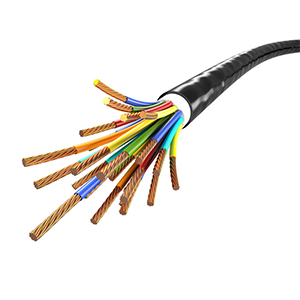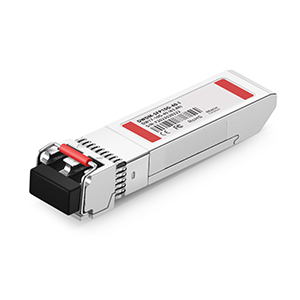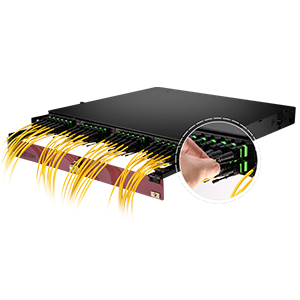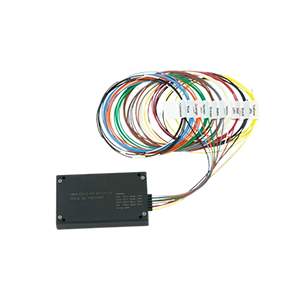In this article, I’ll take a closer look at what an Ethernet crossover cable is, what it’s used for, and how to use it. We’ll cover the importance and role of Ethernet crossover cables in your network, and how it differs from direct-attached cables. By understanding the different types of Ethernet crossover cables, you will be able to choose the best solution for your network needs. Let’s explore the wonderful applications of Ethernet crossover cables in network connections!
What is an Ethernet crossover cable
-
An Ethernet crossover cable is a cable used to connect two computers or network devices. It plays a specific role in the network and is used to enable direct communication between devices.
-
The purpose of an Ethernet crossover cable is to switch the transmit and receive signal lines between devices to allow data transmission between directly connected devices. It allows two computers or network devices to communicate directly without going through an intermediate device such as a network switch or router.
-
Different from Ethernet direct-connect cables, Ethernet crossover cables are used when connecting two devices of the same type. When directly connecting two devices of the same type, a crossover cable is required to achieve proper signal exchange to ensure successful communication.
-
Direct Ethernet cables (also called straight-through cables) are used to connect different types of devices, such as between a computer and a switch or router. The wires in a direct attach cable are arranged in such a way that the send and receive signals communicate correctly between the devices.
Different types of Ethernet crossover cables include Cat5, Cat5e, Cat6 and Cat7, etc. They differ in aspects such as transmission performance and supported frequency range.
- Cat5 crossover cable: suitable for Ethernet with a transmission rate of 10/100 Mbps, often used in older network equipment.
- Cat5e crossover cable: suitable for Ethernet with a transmission rate of 10/100/1000 Mbps (Gigabit Ethernet), and is currently the most common type of crossover cable.
- Cat6 crossover cable: suitable for Ethernet transmission rates up to 10 Gbps, with better anti-interference performance and higher frequency range.
- Cat7 crossover cable: suitable for Ethernet with transmission rates up to 10 Gbps and above, providing better anti-interference performance and a larger frequency range.
-
When comparing different types of crossover cables, the main factors to consider include transmission rate requirements, network device compatibility, anti-interference performance and cost. Based on network needs and equipment requirements, select the appropriate crossover cable type to meet performance and reliability requirements.
Summary: Ethernet crossover cable is a cable used to directly connect two devices of the same type to achieve direct communication between devices. Crossover cables are used when connecting the same type of equipment and have a different lead arrangement compared to direct connect cables. Common crossover cable types include Cat5, Cat5e, Cat6, and Cat7. Choose the appropriate crossover cable based on transmission rate requirements and device compatibility.
How Ethernet crossover cables work
-
The basic working principle of Ethernet crossover cable is to achieve normal communication between two devices directly connected through line sequence exchange and the function of line pairs.
-
Line sequence switching (crossover) in Ethernet crossover cable refers to the switching and connection of wire pairs for sending signals and receiving signals. In a standard Ethernet direct-connect cable, one pair (usually pairs 1 and 2) is used to send signals, and the other pair (usually pairs 3 and 6) is used to receive signals. . In a crossover cable, the pair of wires that send the signal are swapped with the pair that receives the signal.
-
The purpose of wire sequence switching in crossover cables is to enable two directly connected devices of the same type to send and receive signals correctly. When two devices are directly connected, the wire pair that sends the signal and the wire pair that receives the signal need to be exchanged to ensure that communication between the two devices can proceed normally.
-
In addition to wire sequence exchange, the role of wire pairs in crossover cables is also crucial. The wire pair that sends the signal needs to be properly paired with the wire pair that receives the signal to ensure that the signal is transmitted accurately. If the wire pairs are not paired correctly, the signal will not be transmitted properly, causing communication failure.
-
When two devices are directly connected, the crossover cable plays the role of connecting the devices and transmits and receives signals through wire sequence exchange and correct pair pairing. The transmit signal wire pair of the transmitting device is connected to the receive signal wire pair of the receiving device, and the receive signal wire pair of the transmitting device is connected to the transmit signal wire pair of the receiving device. In this way, signals between the two devices can be correctly exchanged and transmitted, achieving normal communication.
Summary: Ethernet crossover cables realize normal communication between two devices directly connected through line sequence switching and the role of line pairs. Line sequence switching is to exchange and connect the wire pairs for sending signals and receiving signals to ensure that communication between devices can proceed correctly. The function of the wire pair is to correctly pair the wire pairs that send signals and receive signals to ensure accurate transmission of signals. When connecting directly connected devices via crossover cables, the sending and receiving signal wire pairs are correctly connected, enabling normal communication between the devices.
Application scenarios of Ethernet crossover cables
Ethernet crossover cables have practical applications in the following different network environments:
-
Direct computer connection: When you need to connect two computers directly, you can use a crossover cable. In this case, crossover cables allow file sharing, online gaming, or other forms of direct communication between computers without going through a network switch or router.
-
Laboratory environment: In the laboratory, researchers or engineers need to connect various equipment (such as computers, test instruments, sensors, etc.) together for data transmission and experiments. Ethernet crossover cables can connect these devices directly, allowing them to communicate over the LAN.
-
Peer-to-Peer: In a peer-to-peer network environment, a direct connection is established between two devices without the use of intermediate devices. Ethernet crossover cables allow direct communication between these devices, such as during file transfers, shared resources, or collaborative work.
-
Specific device connections: Some specific devices (such as network storage devices, network printers, servers, etc.) may have direct-connect ports instead of connecting to the network through a switch or router. In this case, crossover cables are used to connect these devices directly to computers or other devices to perform specific functions or access specific resources.
When to use crossover cables instead of straight-through cables:
Situations that require the use of crossover cables instead of straight-through cables include:
-
Direct connection to the same type of device: When two devices of the same type need to be directly connected (such as computers and computers, switches and switches), since the wire pairs for sending and receiving signals between these devices need to be exchanged, it is necessary to Use crossover cables.
-
Directly connect different types of devices: If you want to connect different types of devices (such as computers and switches, computers and routers), you need to use direct cables because the sending and receiving signal wire pairs of these devices are already correct. pair.
The importance of crossover cables between labs, peer-to-peer connections, and specific devices:
In a laboratory environment, crossover cables are the key to achieving direct communication between devices, which facilitates the transmission of experimental data and the collaborative work of devices.
In peer-to-peer connections, crossover cables provide a convenient way to directly connect two peer devices to achieve high-speed data transmission and resource sharing without the need for additional network equipment.
For specific device connections, crossover cables allow specific devices to be connected directly to other devices to meet specific needs, such as connecting a server directly to a network storage device for fast data transfer.
Summary: Ethernet crossover cables have important applications in scenarios such as direct connection to the same type of equipment, laboratory environments, peer-to-peer connections, and specific device connections. They provide the ability to communicate directly, facilitating data transmission, resource sharing, and device collaboration. Crossover cables are an essential tool for efficient communication when there is a need to directly connect devices of the same type or specific devices.
Comparison of Ethernet crossover cables and other network cables
Ethernet crossover cables, direct-connect cables, and fiber optic cables are common types of network cables, and they have different characteristics and uses in different aspects.
Ethernet crossover cable:
- Purpose: Mainly used to directly connect the same type of equipment, such as the connection between computers and computers or switches and switches.
- Working principle: Correct connection of sending and receiving signals is achieved through line sequence exchange and line pair pairing.
- Transmission distance: Generally suitable for short-distance communications, such as direct connections within a LAN.
Direct-connect cable (straight-through cable):
- Purpose: Used to connect different types of devices, such as the connection between a computer and a switch or a computer and a router.
- Working principle: The wire pairs for sending and receiving signals have been correctly paired, and no wire sequence exchange is required.
- Transmission distance: suitable for short-distance communications, such as direct connections within a LAN.
Fiber optic cable:
- Purpose: Used for long-distance communication and network connections with high bandwidth requirements, such as cross-floor or cross-city network connections.
- Working principle: Using optical fiber to transmit optical signals, it has high speed, high bandwidth and anti-interference performance.
- Transmission distance: The signal can be transmitted over a longer distance and can cover a larger geographical range.
Why crossover cables are better suited in certain situations:
-
Direct-connect cables are suitable for connecting different types of devices, while crossover cables are suitable for direct-connecting the same type of devices. When two devices of the same type need to be connected directly, using a crossover cable ensures correct transmission of the signal without the need for an intermediate device such as a switch or router.
-
Crossover cables are more suitable in scenarios such as laboratory environments, peer-to-peer connections, and specific device connections. Devices in the laboratory need direct communication for data transmission and collaborative work, devices in peer-to-peer connections need direct connections for high-speed data transmission and resource sharing, and specific device connections require direct connections to specific devices to meet specific needs. Crossover cables provide the ability to directly connect devices, meeting the need for direct communication between devices in these scenarios.
-
Optical fiber cables are suitable for long-distance communications and high bandwidth requirements. They have higher transmission speeds and anti-interference capabilities, and are suitable for large-scale networks and long-distance connections. Crossover cables and direct-connect cables are mainly suitable for short-distance communications within the LAN and are suitable for connecting closer devices.
Summary: Ethernet crossover cables are suitable for direct connection to the same type of equipment, providing the ability to communicate directly; direct connection cables are suitable for connecting different types of equipment; and optical fiber cables are suitable for long-distance communication and high bandwidth requirements. Crossover cables are more suitable in certain situations, such as laboratory environments, peer-to-peer connections, and specific device connections, where direct communication between devices is required.
Selecting and using Ethernet crossover cables
Key factors and considerations for selecting and purchasing Ethernet crossover cables:
-
Category: Make sure to choose a crossover cable that matches the Ethernet standard you require, such as Cat5e, Cat6, etc. Different categories have different transmission performance and bandwidth support.
-
Length: Determine the required crossover cable length. Make sure the cable length is sufficient to connect the target device, while avoiding signal attenuation that may be caused by too long cables.
-
Quality: Choose crossover cables that are of reliable quality. Quality cables typically use better materials and manufacturing processes to provide a more stable and reliable connection.
-
Reliability: Check the crossover cable’s specifications and certifications, such as UL certification or TIA/EIA certification, to ensure it meets relevant standards and performs well.
-
Brand reputation and user reviews: Choose crossover cables from well-known brands, or refer to other users’ reviews and feedback for a reliable product.
How to correctly use crossover cables to connect devices:
-
Determine the types of devices that require direct connections, such as computers to computers, switches to switches.
-
Make sure that one end of the crossover cable is connected to the transmit port on one device and the other end is connected to the receive port on the other device.
-
If you are using a crossover cable for a direct connection between the computer and the switch, make sure that the computer’s network card is connected to the crossover cable’s send port and that the switch’s port is connected to the crossover cable’s receive port.
-
Make sure that the crossover cable connection is secure, that the plug is fully inserted into the port on the device, and that there are no loose connections.
-
Verify that the connection is successful and check that the devices can recognize each other and communicate.
FAQs and troubleshooting suggestions:
-
Connection failure: If the device cannot be recognized or communication fails, please check whether the crossover cable is connected correctly and make sure the plug is inserted into the port completely and securely.
-
Speed and performance issues: If you are experiencing slow speeds or poor performance, you can try switching to a higher specification crossover cable, such as Cat6e or Cat7, to provide higher transmission speeds and better performance.
-
Damaged cable: If you suspect that your crossover cable may be damaged, you can try testing with another known working cable to determine if the cable itself is causing the problem.
-
Length issue: If you use a crossover cable that is too long, it may cause signal attenuation and affect communication quality. When selecting the cable length, make sure it meets the required communication distance.
Summary: Consider category, length, quality, reliability and brand reputation when selecting and purchasing Ethernet crossover cables. When using crossover cables to connect devices, ensure that the send and receive ports are connected correctly and verify that the connection is successful. When problems arise, you can rule out possibilities such as connection failures, speed and performance issues, damaged cables, and length issues and take appropriate troubleshooting steps.
Overview:
Thank you for reading our blog! Through the in-depth discussion of this article, you will have a more comprehensive understanding of the definition, purpose and use of Ethernet crossover cables. As a key component in network connectivity, Ethernet crossover cables play an important role in enabling proper communication between directly connected devices. Different from direct-connect cables, crossover cables achieve correct transmission of signals between devices through wire sequence exchange and wire pair configuration.
Ethernet crossover cables play an important role between labs, peer-to-peer connections, and specific devices. We offer high-quality Ethernet crossover cables to meet your network connectivity needs. By choosing our products, you get reliable device connectivity, flexible usage and superior performance. If you have any needs or questions about Ethernet crossover cables, our team is here to provide you with professional support.
Ethernet Crossover Cables FAQ
The purpose of an Ethernet crossover cable is to facilitate direct communication between two devices by swapping the transmit (Tx) and receive (Rx) signals on each end. This enables the devices to transmit and receive data effectively without the use of a switch.
You need to use an Ethernet crossover cable when connecting two devices of the same type, such as computer to computer, switch to switch, or router to router. In contrast, when connecting different types of devices, such as a computer to a switch, a regular straight-through Ethernet cable is used.
Ethernet crossover cables can be identified by examining the wiring arrangement of the cable. The wire order of the transmit and receive pairs is swapped on one end of the cable, typically using a specific color coding scheme.
No, a regular Ethernet cable, also known as a straight-through cable, will not work for direct device-to-device connections. It is specifically designed for connecting different types of devices, such as a computer to a switch.
The color codes used in an Ethernet crossover cable may vary, but a common standard is the T568A or T568B wiring scheme. One end of the cable follows one scheme, while the other end follows the opposite scheme.
Yes, it is possible to make your own Ethernet crossover cable by using the appropriate wiring scheme and connectors. However, it is recommended to use pre-made crossover cables or consult wiring diagrams to ensure accurate connections.
With the widespread adoption of auto-MDIX (Automatic Medium-Dependent Interface Crossover) technology in modern network devices, the need for Ethernet crossover cables has significantly reduced. Most devices can automatically detect and adjust the wiring, eliminating the requirement for a crossover cable.
Yes, Ethernet crossover cables are compatible with Gigabit Ethernet connections. However, it is important to ensure that the cable quality and construction meet the requirements for Gigabit transmission.
While Ethernet crossover cables are primarily used for connecting similar devices directly, they can also be used for certain specialized purposes, such as network testing or connecting specific networking equipment that requires crossover connections.





